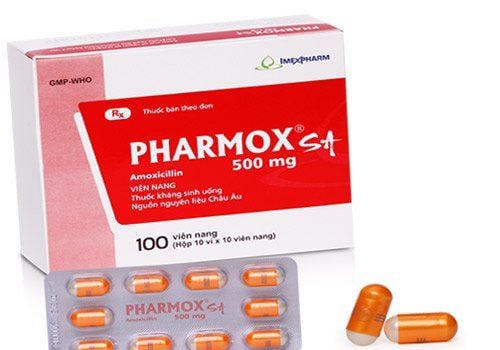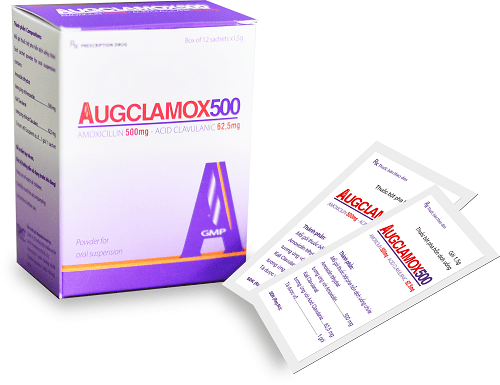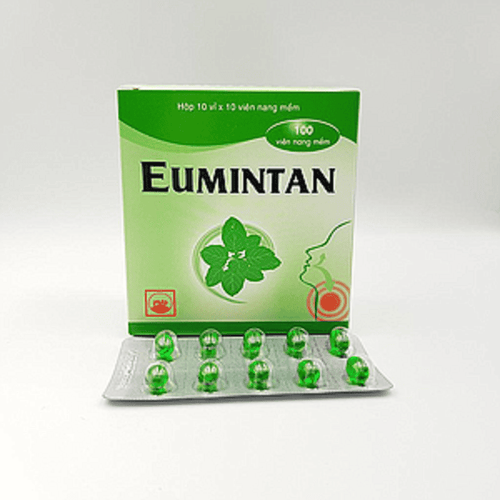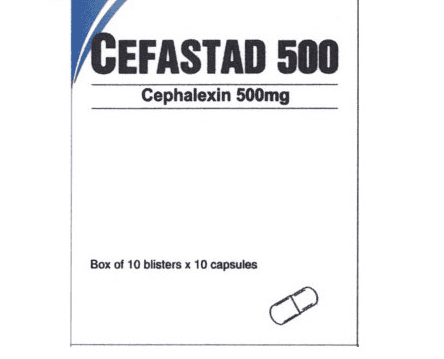This is an automatically translated article.
Pharmox contains amoxicillin - one of the most commonly used antibiotics in healthcare settings. Accordingly, the effect of Pharmox covers a wide range of gram-positive bacteria, with some additional gram-negatives compared to penicillin. Thus, understanding the indications for using Pharmox as well as the contraindications and side effects to optimally treat patients with infections.
1. What is Pharmox?
Pharmox contains amoxicillin as an ingredient. This is one of the substances belonging to the group of beta-lactam antibacterial agents. Beta-lactams work by binding to penicillin proteins, leading to the activation of autolytic enzymes in the bacterial cell wall. This process leads to cell wall lysis, thus destroying the bacterial cell which kills the bacteria.
Thus, the effects of Pharmox often appear in common infectious diseases, from children to adults, such as respiratory infections, skin wounds or even gastritis caused by Hp.
In addition, taking Amoxicillin can also be combined with a beta-lactamase inhibitor. These drugs do not have inherent bactericidal activity. However, they can extend the antibacterial spectrum of amoxicillin to beta-lactamase-producing organisms when combined with amoxicillin.
2. What are the effects of Pharmox 500mg?
The effects of Pharmox have been indicated for use mainly in the treatment of infections caused by bacterial strains (beta-lactamase negative only) in the conditions listed below:
Infections of the ear, nose and nose Throat: Treatment of tonsillitis, pharyngitis, otitis media in adults and pediatric patients ≥12 years old. The microbiological spectrum is infection caused by beta-lactamase-negative Streptococcus species (isolated only from alpha and beta-hemolytic systems), Streptococcus pneumoniae, Staphylococcus species, or Haemophilus influenzae. Helicobacter pylori eradication: Helicobacter pylori triple therapy with clarithromycin, amoxicillin and lansoprazole to eradicate Helicobacter pylori reduces the risk of duodenal ulcer recurrence. Dual therapy with amoxicillin and lansoprazole is also FDA-approved to rule out Helicobacter pylori infection. Lower respiratory tract infections: Treatment of lower respiratory tract infections caused by beta-lactamase-negative Streptococcus species (alpha and beta hemolytic strains only), pneumococcus, Staphylococcus species or Haemophilus influenzae. For community-acquired pneumonia, a combination of amoxicillin and a macrolide is recommended. Acute bacterial sinusitis: Treatment of infections caused by beta-lactamase-negative Streptococcus species (alpha and beta-hemolytic isolates only), Streptococcus pneumoniae, Staphylococcus species or Haemophilus influenzae. Skin and skin structure infections: Treatment of skin and skin structure infections caused by beta-lactamase-negative Streptococcus species (alpha and beta hemolytic strains only), Staphylococcus species or Escherichia coli. Urinary tract infections: Treatment of genital tract infections caused by organisms including beta-lactamase-negative Escherichia coli, Proteus mirabilis or Enterococcus faecalis. In addition, the effect of Pharmox is also considered for use in:
Lyme disease (if doxycycline is contraindicated) Prophylaxis of infective endocarditis Periodontitis associated with metronidazole Dermatitis

Tác dụng của thuốc Pharmox được phát huy trong điều trị nhiễm trùng
3. How to use Pharmox?
Antibacterial agents that kill bacteria, such as pharmox or amoxicillin, are often most effective in a “time-dependent” rather than “concentration-dependent” manner. In fact, Pharmox contains amoxicillin which is an oral antibacterial that comes in the form of an immediate-release or extended-release tablet. In addition, the drug also comes in the form of chewable tablets or suspension, which can be mixed and given with formula, breast milk, water, fruit juice or various cold drinks for children taking the antibiotic amoxicillin if in suspension.
In adults, the dosage of pharmox is 750-1750 mg / day, divided into several times, every 8-12 hours.
In pediatric patients > 3 months of age, the dose of pharmox is 20-45 mg/kg/day in divided doses 8-12 hours apart.
Dosage in the treatment of H. pylori infection: Triple therapy: 1 gram of amoxicillin, 500 mg of clarithromycin and 30 mg of lansoprazole, all given twice daily (every 12 hours) for 14 days.
4. Possible side effects when taking Pharmo
Pharmox or amoxicillin are generally well tolerated but some common complaints may be gastrointestinal symptoms, such as nausea, vomiting and diarrhea.
Superinfection: Candida infection of the skin, diarrhea caused by clostridium difficile. Renal toxicity: Crystalline urine, interstitial nephritis. Hypersensitivity reactions: Amoxicillin may lead to type I, II, III or IV reactions. Hepatotoxicity: Characteristic cases of liver damage have been reported in people taking amoxicillin. Most patients recover quickly after stopping amoxicillin. The cause of liver damage associated with the use of amoxicillin is hypersensitivity. Corticosteroids are commonly used to treat the allergic manifestations of penicillin-associated allergic hepatitis. Gastrointestinal: black hairy tongue, pseudomembranous colitis, hemorrhagic colitis Nervous: reversible hyperactivity, agitation, anxiety, insomnia, confusion, convulsions, aseptic meningitis Hematology : hemolytic anemia, thrombocytopenia, thrombocytopenic purpura, eosinophilia, leukopenia. Dermatology: serum sickness-like reactions, maculopapular rash, exfoliative dermatitis, toxic epidermal necrolysis, hypersensitivity vasculitis

Tác dụng của thuốc Pharmox có thể khiến người bệnh gặp tình trạng buồn nôn
5. Contraindications when taking Pharmox
Any previous anaphylaxis or serious skin reaction (eg, Stevens-Johnson syndrome) to amoxicillin or any other beta-lactam is a contraindication to Pharmox. These reactions may result in cross-sensitization with cephalosporins or carbapenems. For this reason, it is essential to be aware of hypersensitivity reactions and for patients to understand to notify their physician of any rash.
Some patients may experience diarrhea but it is mild and usually tolerable. However, persistent diarrhea accompanied by fever and abdominal pain should be evaluated by a clinician immediately.
In addition, when taking Pharmox or other penicillins in high doses, it can cause convulsions, especially in patients with kidney failure
In short, Pharmox or amoxicillin is a prescription drug that is prescribed Used to treat many types of bacterial infections. Accordingly, the effects of Pharmox may be recommended to treat infections of the nose, ears, throat, urinary tract or skin. In addition, the drug Pharmox can also be used for pneumonia, tonsillitis or bronchitis; It is also sometimes used with other medicines to get rid of H. pylori. Therefore, it is necessary to know what Pharmox 500mg does and how to use it to help control the infection effectively, avoiding unwanted effects.
Please dial HOTLINE for more information or register for an appointment HERE. Download MyVinmec app to make appointments faster and to manage your bookings easily.













